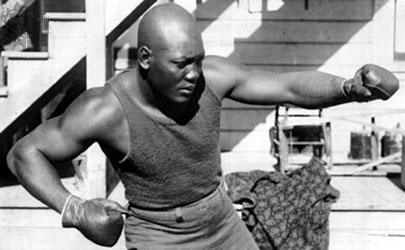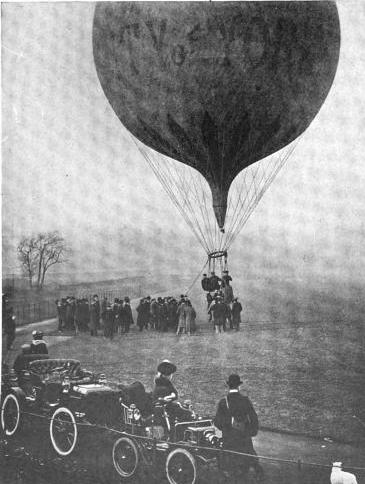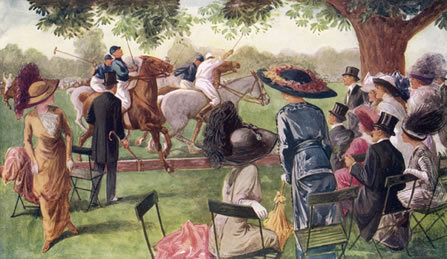
By the turn of the century, the color line in sports was firmly in place, but the charismatic and controversial Jack Johnson smashed this line with a firm one-two to the jaw. Though boxing had long roots, it was a fairly new sport to Americans in the 1880s, and though banned in many states, one law that was standard across the board was denying black boxers the right to spar with white opponents. To circumvent this law, many African-Americans traveled to France, where mixed-race bouts were legal–which is where solid contenders such as Johnson, Sam Langford, and Joe Jeannette built their reputations. This law was relaxed to an extent in the late 1890s, but black boxers were still barred from fighting for the world heavyweight championship. Jack Johnson refused to accept this restriction, and he worked hard to prove his mettle, winning at least 50 fights against both white and black opponents in 1902, and beating “Denver” Ed Martin over 20 rounds for the World Colored Heavyweight Championship in 1903.
Johnson’s strides were thwarted by the the retirement of world heavyweight champion Jim Jeffries, who refused to fight a black boxer; but Johnson warmed up to his inevitable victory by fighting former champion Bob Fitzsimmons in July 1907 and knocking him out in two rounds. Johnson changed his target, stalking the current champion Tommy Burns around the world for two years, taunting and teasing him in the press for a match. Finally, in 1908, Burns agreed to fight Johnson in Australia for $30,000. The spectacular fight was watched by 20,000 people and lasted fourteen rounds before the police stepped in to halt the fight and award the title of Heavyweight Champion of the World to Johnson on a referee’s decision as a T.K.O.
The furor of Jack Johnson’s victory rang across the world, inciting Jack London to call out for a “Great White Hope” to take the title away from Johnson. For the next two years, Johnson was pitted against a bevy of “great white hopes,” whom he beat roundly and soundly. In response to the public’s demands, Jim Jeffries emerged from a six year retirement to be that “Great White Hope”:
“I feel obligated to the sporting public at least to make an effort to reclaim the heavyweight championship for the white race. . . . I should step into the ring again and demonstrate that a white man is king of them all.”
The fight took place on July 4, 1910 in front of 20,000 people, in a ring built especially for the match. The fight was fraught with racial tension, and newspapers across the world–and even movie cameras–were deployed to Reno to record the “Fight of the Century.” After fifteen rounds, during which Jeffries had been knocked down twice for the first time in his career, the match was stopped, whereupon Johnson was declared the victor and winner of a cool $65,000. This win, upon which so many blacks and whites had pinned their respective hopes, sparked enormous race riots across the country–though some “riots” were merely attempts by white residents to suppress the celebrations of black Americans over the victory. The footage of the fight was shown across the world, despite some cities and states banning its showing; ultimately, undoubtedly in response to the Jack Johnson victory and fallout, Congress passed a law banning the distribution of prizefight films across the state lines in 1912.
Further Resources:
Unforgivable Blackness: The Rise and Fall of Jack Johnson (PBS Film)
Jack Johnson Boxing Record
Jack Johnson (Online Exhibition)
The life and battles of Jack Johnson, champion pugilist of the world (eBook)





I love this post. Inspirational stories are so much more fun when racist people get beat up.
LOL, thanks!